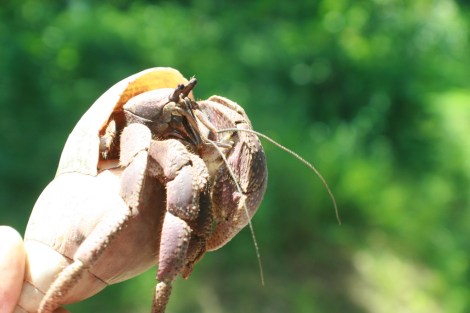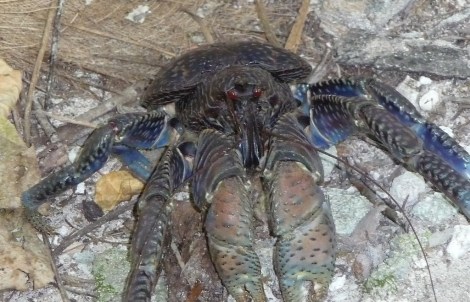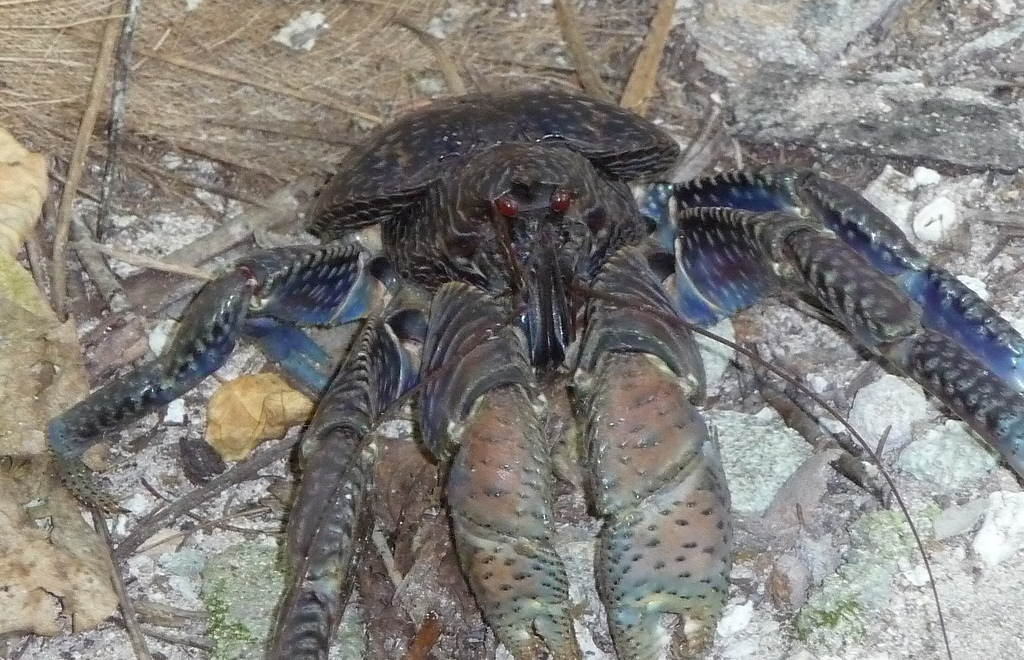You’d think that coconut crabs would be our kind of terrestrial anthropods. After all, they know how to get the most out of the resources at their disposal. About a month after they’re born, they find old snail shells lying around and, like your average hermit crab, crawl in and get cozy. See, they’re kind of cute:

Arthur Chapman Cute.
But as they get bigger and bigger, coconut crabs move from reuse to recycling. Once they develop a hard shell, they no longer need the old snail shells. Instead, they can shed their exoskeletons and develop new ones. But to get the requisite materials, they eat their old shells.
It is, in effect, recycling the materials, which are in short supply in its terrestrial environment. Coconut crabs that “are disturbed before they have consumed the entire shell often have soft exoskeletons until they have time to reaccumulate the necessary calcium and other minerals,” Drew said in an email to WIRED.
So yeah, we’d applaud this resource-smart crabs, except we’re paralyzed with terror. Because one side effect of this particular strategy is that coconut crabs can get GIGANTIC. Like, three feet wide, from the tip of one leg to another — as big as a small dog. Bigger than the coconuts they like to eat. Bigger than kittens or chickens, both of which they’ve been known to eat too. Bigger than human babies, which … we wouldn’t put it past them. The whole “recycling” thing is real cool until they recycle YOU AND EVERYONE YOU LOVE.

Drew AveryLess cute.



